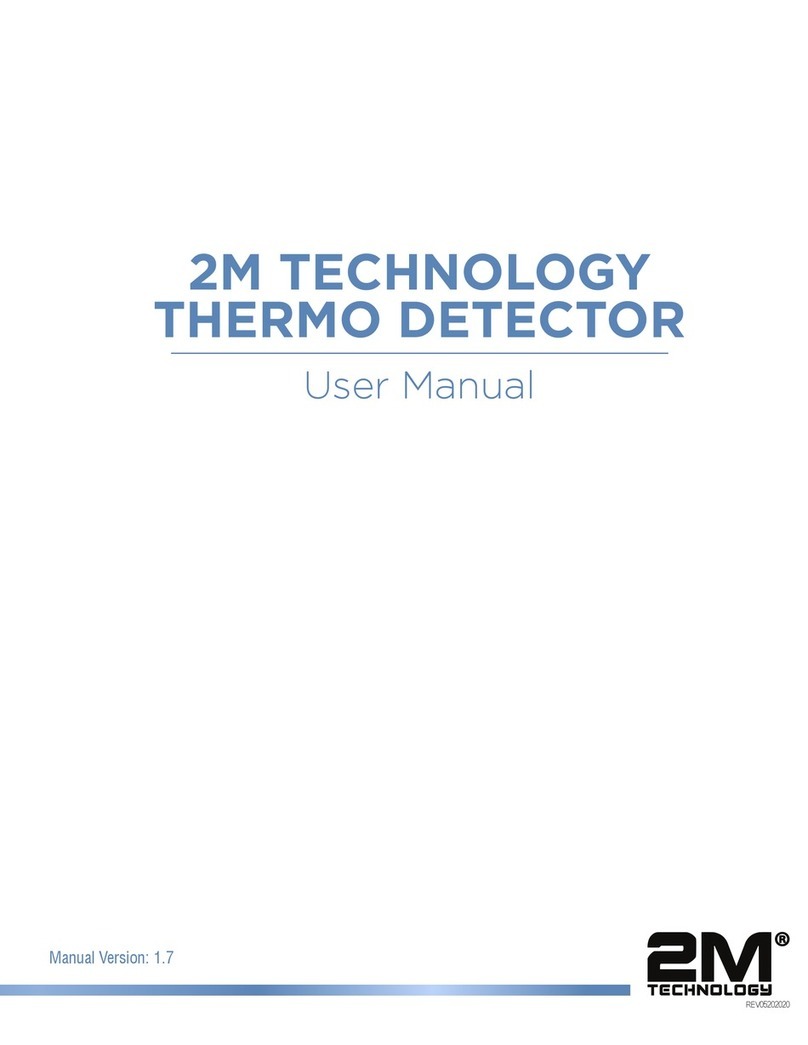
5
www.2MTechnology.net
2M Technolgy User Manual
SUITABLE PLACES
I. Suitable for law enforcement agencies: Including public security departments, procuratorates, courts, prisons, reforma-
tories and penitentiaries etc. requiring forbidden metallic article inspection.
II. Suitable for public places: Including public places such as gymnasiums /stadiums, recreation places, airports, customs
authorities, exhibition halls and museums etc. requiring entrance safety in spection.
III. Suitable for manufacturing enterprises: Including electronic product, hardware, coinage and jewelry manufacturing
enterprises etc. requiring safety inspection for fear of loss of valuables.
(Hand metal detectors are suitable for all the above mentioned places and therefore are necessary auxiliary inspection
equipment for inspectors).
PERFORMANCE AND CHARACTERISTICS
I. Accurate localization: Six overlapped netlike detection locations, double side emission, double side reception,
accurate localization of detected articles and visual display of objects.
II. Multi-location alarming: More than one metal position can be localized at the same time.
III. Microprogramming technology: The electromagnetic wave used for scanning can be generated by the control
circuit of microcomputer and the scanning rate can be controlled accurately. The program can be set via the
control panel according to the requirement in order to ensure exible, reliable and stable sensitivity setting.
IV. Compound circuit design: The infrared scattering device with quick sensing and automatic computer identi
cation functions can help to reduce false alarms and alarm failures. The number alarms and passed persons can
be recorded automatically.
V. Digital pulse technology: A digital signal processing and ltering system with perfect EMI resistance is provided.
VI. Adjustable sensitivity: Each detection zone has been provided with 1000 sensitivity levels (0 ~ 999), and therefore
the location can be adjusted to an available sensitivity according to the detection requirement (the higher the set
value is, the higher the sensitivity will be). The integral sensitivity can be realized through adjusting the six
locations at the same time.
VII. Password setting: Change of parameters regarding program and sensitivity etc. is only allowed after the
password is entered correctly. The password consists of four gures set freely by users (Note: The passwords
with regard to setting items of the system are unchangeable).
VIII. Serial port communication: Data communication interfaces are reserved for online operation.
IX. Modular design: The adopted modular design realizes easy installation and troubleshooting.
X . High impact resistance design / manufacturing: High impact / bump resistance when no one passes
through.
The stand-by or normal operation modes can be kept in good conditions regardless of any external factor.
XI. Magneticeldemissiontechnology:The product can meet the popular international safety standard and
the
weak magnetic eld technology has been adopted and therefore does no hann to pacemaker users, pregnant
women, oppy disks, lms and videotapes etc.




























